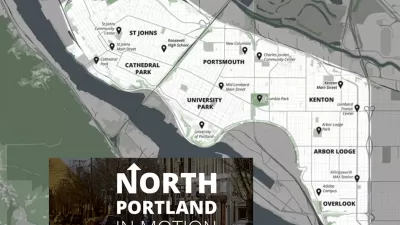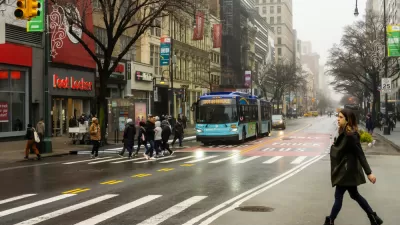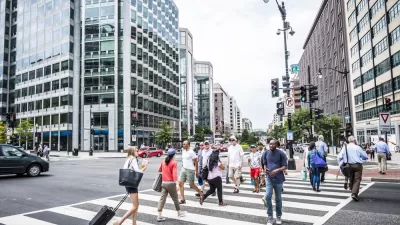Biking and walking are often assumed as two peas in a pod, when in fact it might be more helpful to think of them as apples and oranges.

Michael Andersen shares news of a study that reveals insight into a fundamental challenge facing the designing and building of alternative transportation infrastructure: pedestrian infrastructure is much more challenging to develop than bike infrastructure.
The proof is in Portland, according to Andersen: "Portland has a long way to go, but it’s one of the country’s best cities to bike in. Sad to say, it isn’t yet one of the country’s best cities to walk in."
Christopher Muhs—who wrote the study while an engineering grad student at Portland Statue University and working with PSU professor Kelly Clifton—"looked at various studies that found correlations between characteristics of cities and neighborhoods and the amount of biking and walking that happens in them — number of intersections per mile, for example, or the size in square feet of local retail stores."
That survey revealed key differences between bike and pedestrian infrastructure, including the greater difficulty in making pedestrian infrastructure investments that can actually influence mode choice. So for instance, directly from the study: "In three US studies, the magnitudes of the trip distance coefficient for walk mode choice were more than three times those of the corresponding coefficient for bicycling."
FULL STORY: Bike-friendliness and walk-friendliness are actually pretty different, study says

Planetizen Federal Action Tracker
A weekly monitor of how Trump’s orders and actions are impacting planners and planning in America.

Maui's Vacation Rental Debate Turns Ugly
Verbal attacks, misinformation campaigns and fistfights plague a high-stakes debate to convert thousands of vacation rentals into long-term housing.

Restaurant Patios Were a Pandemic Win — Why Were They so Hard to Keep?
Social distancing requirements and changes in travel patterns prompted cities to pilot new uses for street and sidewalk space. Then it got complicated.

In California Battle of Housing vs. Environment, Housing Just Won
A new state law significantly limits the power of CEQA, an environmental review law that served as a powerful tool for blocking new development.

Boulder Eliminates Parking Minimums Citywide
Officials estimate the cost of building a single underground parking space at up to $100,000.

Orange County, Florida Adopts Largest US “Sprawl Repair” Code
The ‘Orange Code’ seeks to rectify decades of sprawl-inducing, car-oriented development.
Urban Design for Planners 1: Software Tools
This six-course series explores essential urban design concepts using open source software and equips planners with the tools they need to participate fully in the urban design process.
Planning for Universal Design
Learn the tools for implementing Universal Design in planning regulations.
Heyer Gruel & Associates PA
JM Goldson LLC
Custer County Colorado
City of Camden Redevelopment Agency
City of Astoria
Transportation Research & Education Center (TREC) at Portland State University
Jefferson Parish Government
Camden Redevelopment Agency
City of Claremont





























